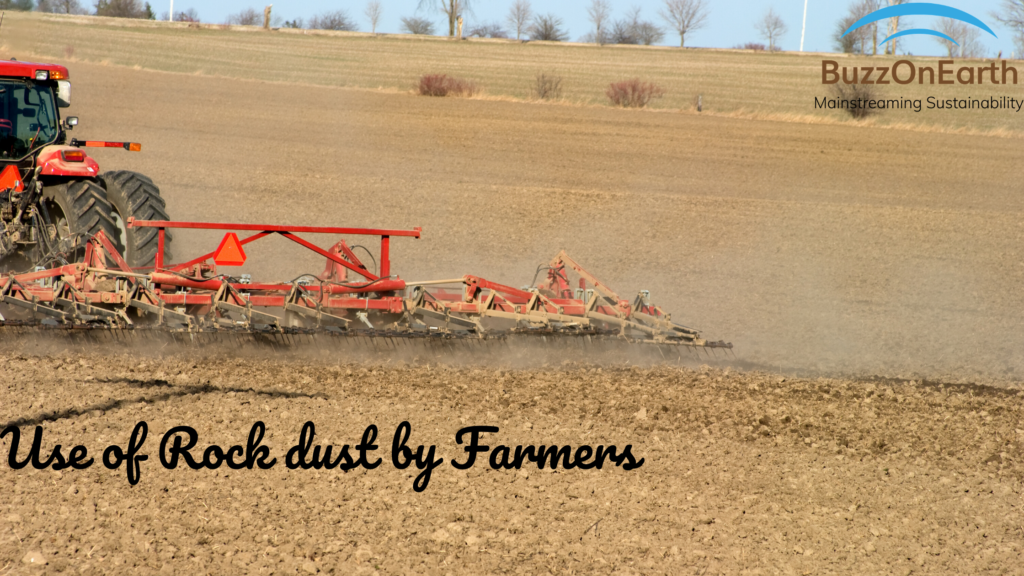Carbon sequestration has been considered as a significant measure to prevent ecological damage caused by carbon dioxide as a greenhouse gas. While oceans and forests act as natural carbon sinks the search for new methods has been on with experiments. Now, as a new measure, spreading rock dust on crop fields is being advocated as an efficient method to remove the vast amount of carbon dioxide from the atmosphere. The process is effective in the terms that calcium and magnesium in rock dust absorb carbon dioxide to form carbonates. This method is technically called Enhanced Rock Weathering (ERW). This article is an attempt to analyse the sustainability of this newly proposed approach. So this is all about the role of rock dust in carbon sequestration.
Availability and supply of Rock Dust for Carbon Sequestration
Silicate rock dust is a cheap by-product of operations in mining and, iron and steel industry. Waste cement from construction and demolition activities is another source of rock dust. So, its availability on a regular basis, at a relatively cheaper price, is highly certain. Creation of a regional warehouse can facilitate centralized distribution. The procurement, warehousing and distribution could be facilitated by a network of government, manufacturing firms and farmers’ associations.
Issues in the use of rock dust by farmers:

Price is not going to stop its purchase but the question is, who will buy it. Firstly, a government-sponsored awareness campaign is necessary to educate farmers about how the rock dust can improve the fertility of arable land. It is a known fact that silica, potassium and iron in rock dust add to crop nutrition. Also, rock dust helps in reducing the acidity of the soil. Secondly, farmers should also be made to understand how their efforts are adding to the protection of the environment in general and hence a sense of ownership needs to be developed too. This again poses a major challenge at hand.
Conditions for the desired chemical reaction:
Carbonate formation is a slow process. The formation of magnesium carbonate requires relatively high pressure and moderate temperature. This condition restricts the use of rock dust for the purpose of carbon sequestration in colder countries. The acidity of cropland where rock dust is applied has to be kept in check as both calcium carbonate and magnesium carbonate dissociate in acidic medium to release carbon dioxide back into the atmosphere. So, rock dust approach is not advised in areas where acid rain is expected.
A Few Caveats to Consider
Rock dust flown by wind increases particulate matter and total suspended solids (TSP) in the air. This air inhaled by people affects their respiratory system in the long run. Rock dust deposited on plant leaves reduces leaf area exposed to air and sunlight. It affects photosynthesis, respiration, transpiration and pollination posing a serious danger to plant growth. It is also observed that rock dust flown in the air decreases the natural defence mechanism of plants against pests and diseases. So, the method of spreading rock dust should be modernized to avoid the chance of it being blown in wind. Apart from these, the wet and dry deposit of particulate matter in the soil will affect soil and water properties. It may have a deteriorating effect on the biodiversity around the farmland at large. So, it is necessary to create boundaries to croplands where rock dust is applied. This will ultimately result in carbon sequestration.
Conclusion:
Spreading rock dust in acidic farmlands can be considered as an effective method for carbon sequestration by way of carbonate formation in a temperate climate. Due care has to be taken to avoid dust being blown in the air or from being carried away out of the farmland. This method could be beneficial to countries such as the US, China and India where large croplands exist, albeit it will have to take the regional soil chemistry into consideration too. Still, the effect of rock dust on the soil and water properties needs further research to improve the rock dust approach overall.Read more about how carbon reduction helps in concreting sustainability.

